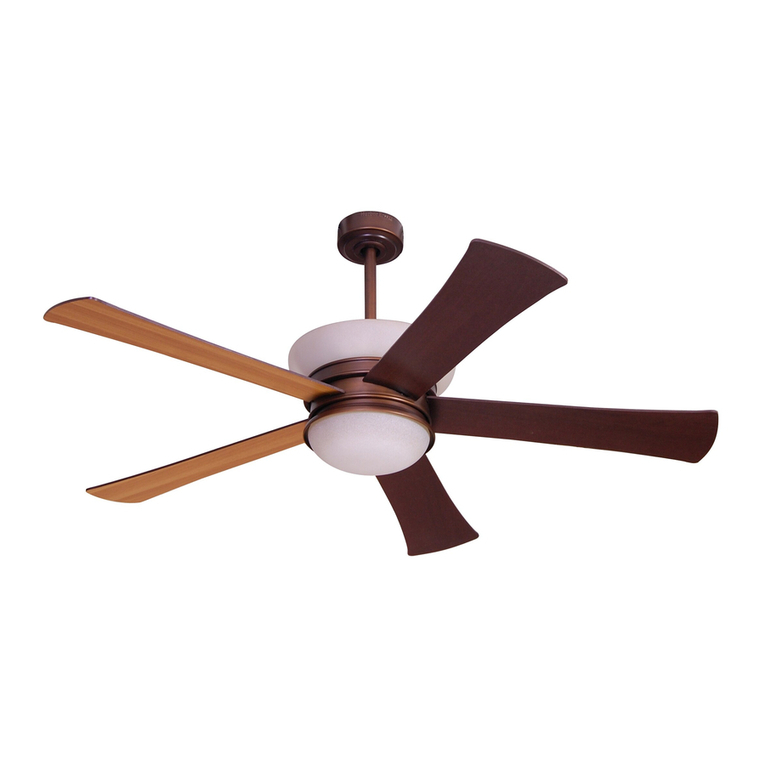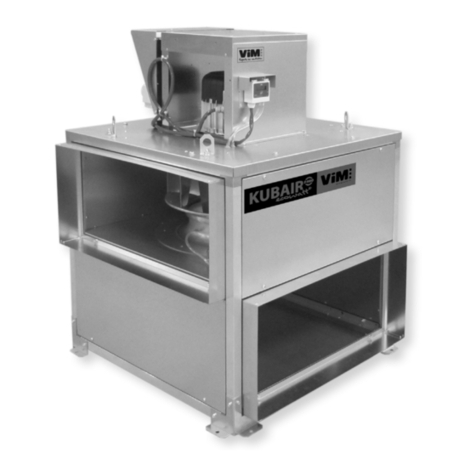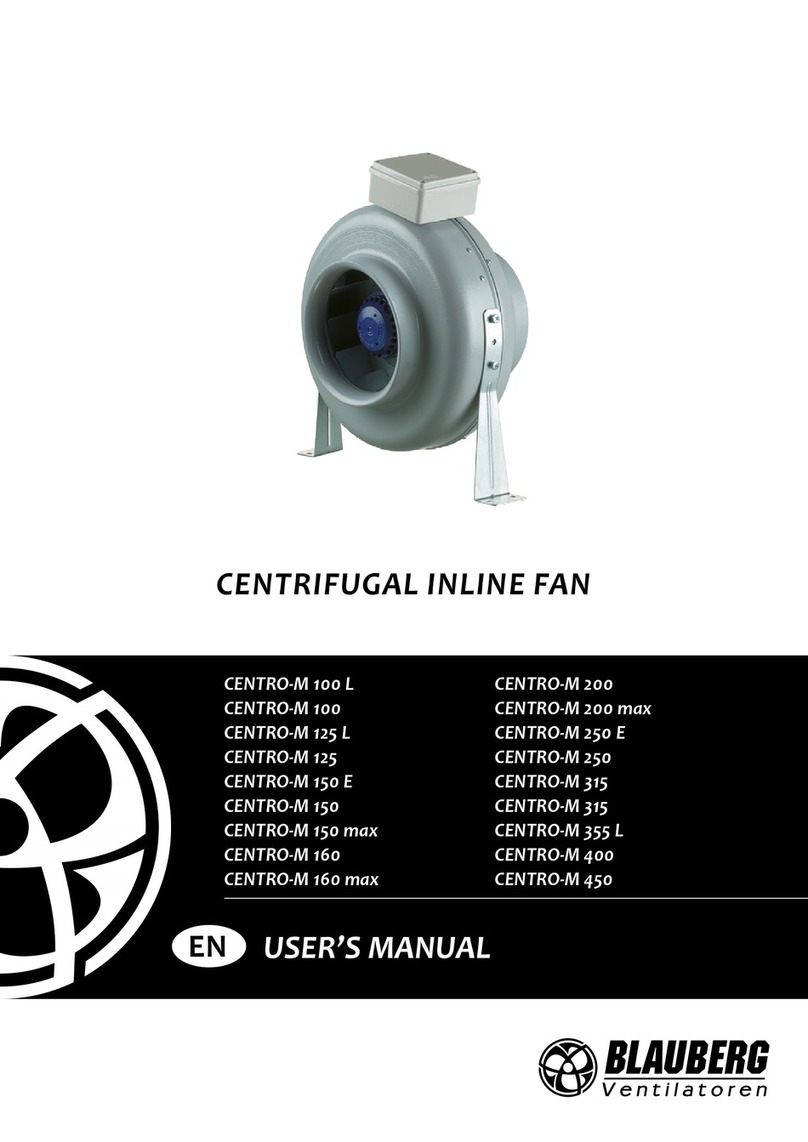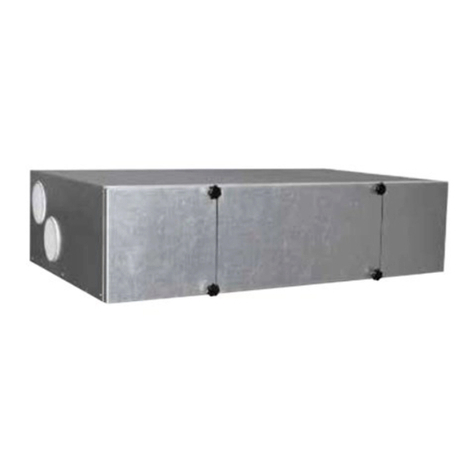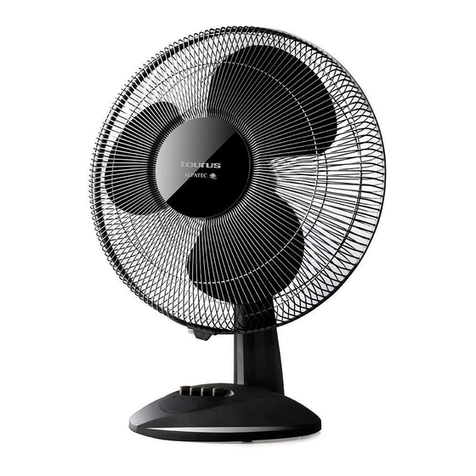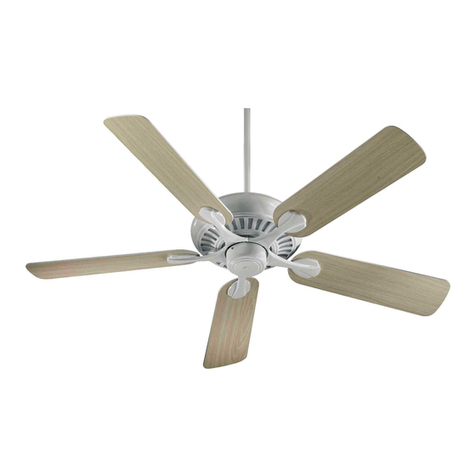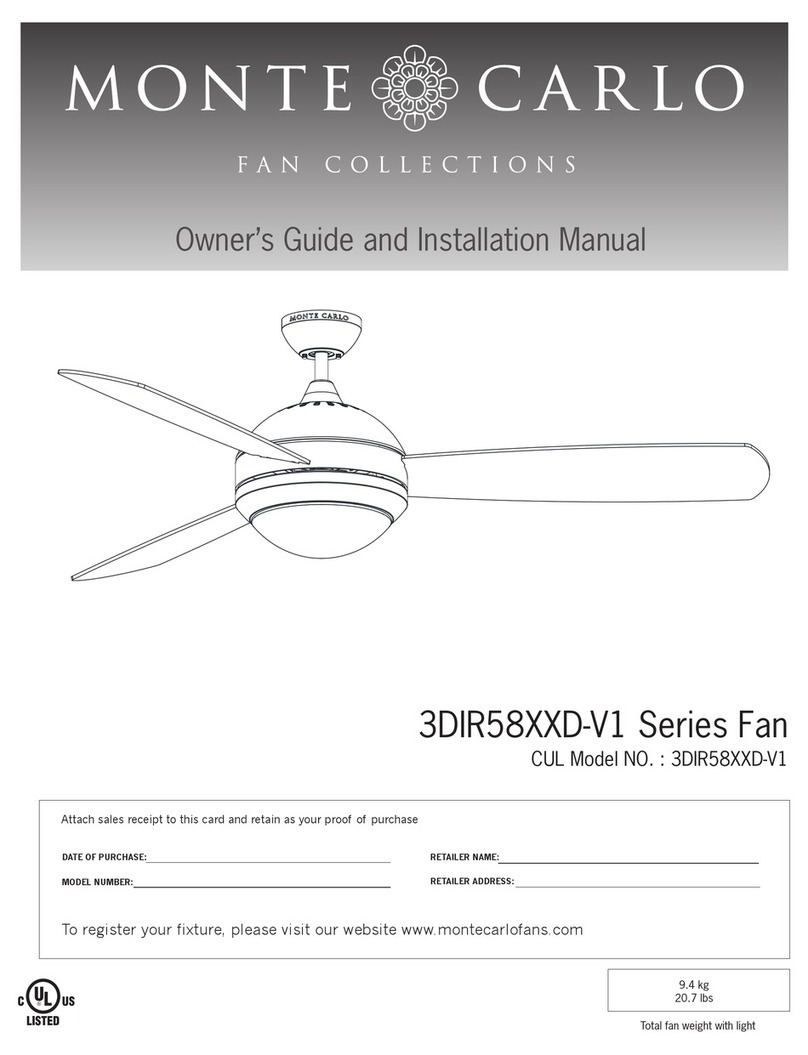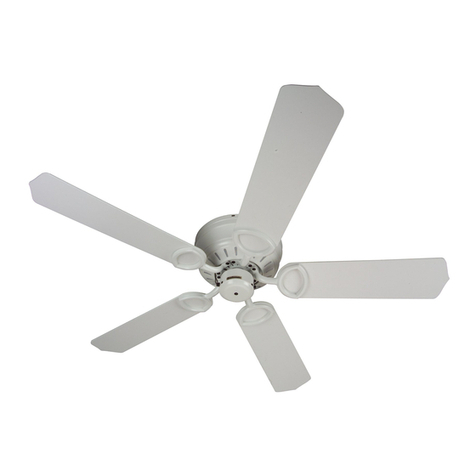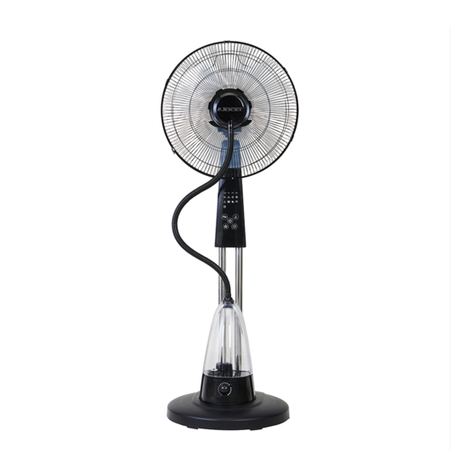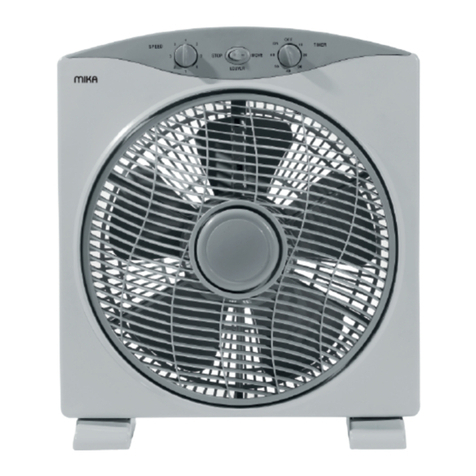
SERVICE AND MAINTENANCE FAN COILS
496 08 8001 00 3
Specifications subject to change without notice.
NOTE: Unused fan speed leads must be capped or taped off
to prevent direct short to cabinet surface.
2. Functional Control
a. Thermostat and Relay Control
When thermostat calls for the fan in cooling, heat
pump, heating, or fan−only mode, a 24−Vac signal
is sent to relay. This causes the relay to close its
normally−open contacts, turning on fan. When
thermostat no longer calls for the fan, the signal
sent to relay is turned off and relay opens causing
fan to turn off after a 90−second fan−off delay.
b. Sequencer/Electric Heat Relay Interlock
The fan will also operate whenever there is a call
for electric heat, even if fan relay is not energized.
This happens because fan is interlocked with first
stage of electric heat through the normally−closed
contact of fan relay.
NOTE: The fan interlock is only connected to first stage
electric heat (W2). W3 and E do not contain an interlock with
fan. See outdoor thermostat installation instructions when
electric heat staging is desired.
C. Electric Heat
When thermostat calls for electric heat, a 24−Vac signal is
sent to sequencer/heat relay through W2, causing first stage
to turn on. W3 and E also receive signal if wired in with W2. If
W3 and E are not wired to W2, the sequencers/heat relays
can be controlled individually to stage additional electric heat.
The sequence control is described in the following section:
1. W2
When thermostat sends a signal to W2, a 24−Vac
signal is applied across sequencer/relay No. 1, causing
it to close. When sequencer/relay No. 1 closes, first
stage of electric heat is energized. In straight electric
heat, fan is also energized through the normally closed
contacts of fan relay. In cooling, heat pump, or manual
fan mode, fan will already be running since fan relay
would have been energized. When thermostat stops
calling for electric heat, the 24−Vac signal to
sequencer/relay No. 1 turns off and sequencer opens
after a delay of 60 to 90 seconds. Heaters equipped
with relays will be de−energized immediately. When
sequencer/relay opens, first stage of heat turns off
along with fan, providing thermostat is not calling for
the fan.
2. W3
When a signal is sent to W3, a 24−Vac signal to
sequencer/relay No. 2 causes it to close, with second
stage of electric heat turning on. The 24−Vac signal
applied to sequencer/relay No. 1 causes fan to
operate. Timing is such that sequencer/relay No. 1 will
turn on before sequencer/relay No. 2. When signal to
W3 is turned off, sequencer/relay No. 2 opens. If W2 is
also satisfied, first stage of electric heat and fan will
also turn off, providing thermostat is not calling for the
fan.
3. E
When thermostat sends a signal to E, a 24−Vac signal
is sent to sequencer/relay No. 3. The 24−Vac signal
applied to sequencer/relay No. 3 turns on third stage of
electric heat. The 24−Vac signal applied to
sequencer/relay No. 1 turns on first stage of electric
heat and fan. When thermostat stops calling for electric
heat, the signal to sequencers/relays 1, 2, and 3 are
turned off, and sequencers/relays open. This causes
electric heat to turn off with fan, providing thermostat is
not calling for the fan.
NOTE: Electric heaters are factory wired with all stages tied
together. If independent staging is desired, consult outdoor
thermostat installation instructions, or corporate thermostat
instructions.
TROUBLESHOOTING THE PRINTED CIRCUIT BOARD
Use wiring schematics shown in Figure 1 as a guide in
troubleshooting PCB unless otherwise noted.
A. If Fan Will Not Turn On from Thermostat:
IF THERE IS NO HIGH VOLTAGE TO TRANSFORMER:
1. Check plug/receptacle connection. This supplies power
from heaters to PCB Fan Relay. Be sure plug is
connected properly.
2. Check sequencer/relay No. 1 and plug wiring. Yellow
wire should be connected to Pin No. 9 of plug and to
limit switch. Black wire should be connected to Pin No.
7 of plug and to sequencer/relay No. 1.
3. Check field power leads L1 and L2. If these are not
receiving power, system cannot function.
IF TRANSFORMER HAS HIGH VOLTAGE APPLIED TO IT:
1. Check low−voltage transformer leads R (red) and C
(brown). Be sure they are wired to correct locations.
2. Check output voltage of transformer secondary side R
(red) and C (brown). Be sure transformer output is
between 18Vac and 30Vac. If transformer output is
incorrect and transformer is receiving correct input
voltage (208V or 230V), then transformer needs to be
replaced with recommended transformer. If no problem
exists with transformer secondary, proceed to items 3
and 4.
3. Check low−voltage fuse shown in Figure 1. If fuse is
blown, replace it with an identical 5−amp fuse. The
transformer cannot supply power to board with fuse
blown or loose. If fuse blows when unit has power
applied to it, the system most likely has one of the
following problems:
a. Check all 24−V wiring for an electrical short.
b. The maximum load on transformer is 40 VA. If load
on transformer is excessive, the low−voltage 5−amp
fuse will blow to protect transformer. If load exceeds
VA rating of transformer, a larger VA rated
transformer needs to be installed. Check
sequencers/relays for excessive current draw.
c. Check wiring of heaters. If a heater is miswired,
fuse may blow. If a heater is miswired, correct
miswiring by comparing it to heater wiring label.
4. Check connections on primary side of transformer. If
they are not connected properly, the transformer
secondary cannot supply the 24−V signal to energize
fan relay. If transformer is receiving correct primary
voltage but is not putting out correct secondary voltage,
transformer needs to be replaced.
B. If Electric Heat Stages Will Not Turn On But Fan Will
Turn On:
IF THERE IS NO HIGH VOLTAGE TO TRANSFORMER:
1. Check plug connection between heaters and board.
This supplies power to transformer and fan. Be sure
plug is connected properly.
2. Check sequencer/relay No. 1 and plug wiring. Yellow
wire should be connected to Pin No. 9 of plug and to
limit switch. Black wire should be connected to Pin No.
7 of plug and to sequencer/relay No. 1.
3. Check incoming high−voltage power leads. If these are
not receiving power, system cannot function.

